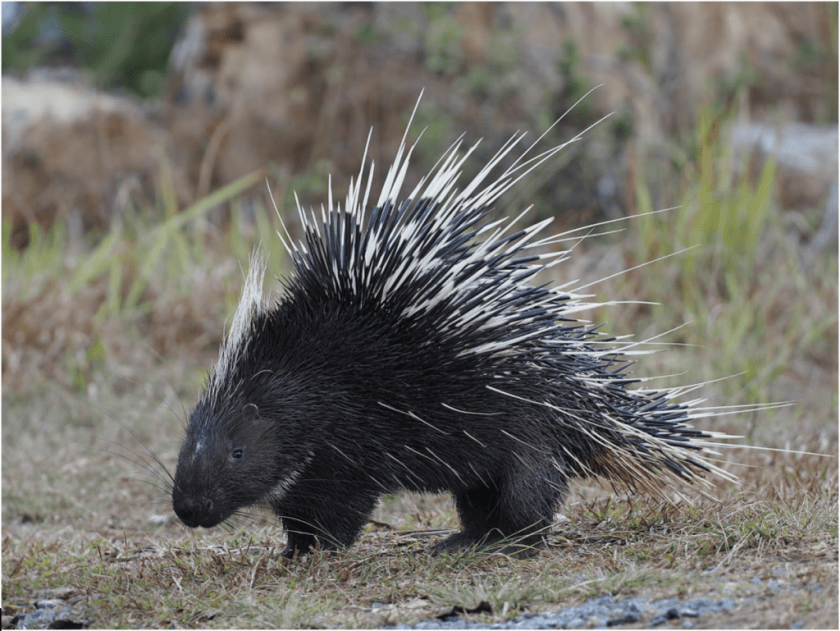Porcupines are frequently traded across Asia, and Indonesia, home to five species, is no exception. They are targeted for a number of reasons: their meat as an alternative source of protein, their bezoars consumed as traditional medicine, and their quills used as talismans and for decorative purposes.
A new study examining seizure data of porcupines, their parts and derivatives in Indonesia found a total of 39 incidents from January 2013 to June 2020 involving an estimated 452 porcupines. The research was published in the open-access, peer-reviewed journal Nature Conservation.

There are no harvest quotas for any porcupine species in Indonesia, which makes all hunting and trade in porcupines illegal. Of the five species found in the country, only the Sunda porcupine (Hystrix javanica) is currently protected, with its protected status only introduced in 2018. Interestingly, prior to 2018, the Malayan porcupine (H. brachyura) was the only protected porcupine species in Indonesia, but then it was removed from the updated species protection list and replaced with the Sunda porcupine.
“The reasons for this are unclear, but certainly unwarranted, considering that the Malayan porcupine is the species most frequently identified as confiscated, and one can only assume the reason for its removal is due to its commercial value,” says Lalita Gomez, author of the study and Programme Officer of Monitor Conservation Research Society.
What clearly emerges from this study is that porcupines are being illegally hunted and exploited throughout their range in Indonesia for local subsistence and commercial trade. Porcupines are reportedly in decline in Indonesia, yet there seems to be little control or monitoring on uptake and trade. This is particularly concerning because four of the five porcupine species in Indonesia have a restricted range, and three of them are island endemics – the Sumatran porcupine (H. sumatrae), Sunda porcupine, and Thick-spined porcupine (H. crassispinis).
Illegal hunting and trade of porcupines in Indonesia is facilitated by poor enforcement and legislative weakness, and it is imperative that effective conservation measures are taken sooner rather than later to prevent further depletion of these species.
Gomez recommends that all porcupines be categorised as protected species under Indonesian wildlife laws and listed in Appendix II of the Convention on International Trade in Endangered Species of Wild Fauna and Flora (CITES). This would require any international trade to take place through a supervisory system, which would allow for regulation and make it easier to track and analyse trends, thus providing an early warning system in case wild populations begin to decline.
Original source:
Gomez L (2021) The illegal hunting and exploitation of porcupines for meat and medicine in Indonesia. Nature Conservation 43: 109-122. https://doi.org/10.3897/natureconservation.43.62750






























 Upon finding the three corpses, the researchers were certain that the animals had not been killed by a human. In the beginning, the suspects were all male brown bears reported from the area in 2015.
Upon finding the three corpses, the researchers were certain that the animals had not been killed by a human. In the beginning, the suspects were all male brown bears reported from the area in 2015.